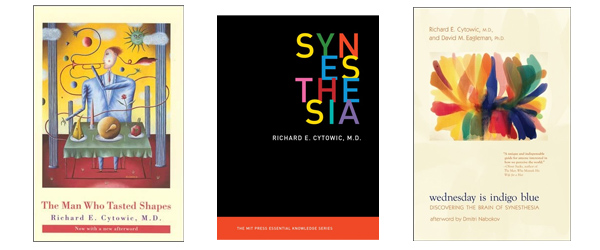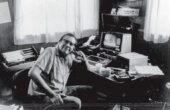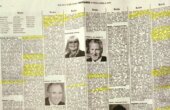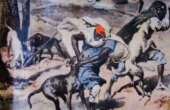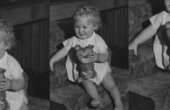Exploring Drug-Induced Synesthesia
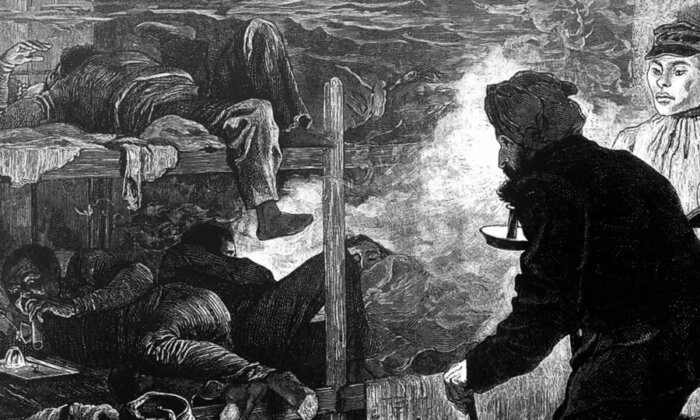
The use of drugs is often associated with the consciousness-expanding experiences and heightened sensibility described in religious revelations and visions of utopia. But does that mean all users of hallucinogenic drugs become synesthetes, able to perceive uncommon collaborations of several senses at once? The effects of depressant, stimulant, and hallucinogenic drugs on human perception and thinking is well-studied, as evidenced by the large volume of publications on the subject. Browsing through this literature, one finds references to drug-induced synesthesia in two chambers of the library: the science and literature rooms.

In the literature room I followed with delight the tracks of poets and novelists as they took their perceptual experiments to the edges of human experience. After reading wild descriptions by poets proclaiming the merits of their drug-induced synesthesia, I studied the pharmacology and neurology of the same experiences and compared notes. One thing became immediately clear: There is, without a doubt, a special relationship between drugs and synesthesia. But that relationship turns out to be quite different from what I expected.
Opium Eaters
In 18th-century England, opium was considered a normal medicine and was used in much the same way that people use aspirin today: Opium was considered a good remedy for pain, fatigue, and depression and could be obtained at the local shop. It was also the drug of choice for dealing with sleep difficulties. Several English writers and poets of the Romantic period wrote about their opium experiences, including Thomas De Quincey, Samuel Taylor Coleridge, John Keats, George Crabbe, and Francis Thompson. Their descriptions sometimes include visions that remind me of contemporary reports by synesthetes. For instance, the poet and opium addict Francis Thompson noted on one occasion that he saw the sun rise “with a clash of cymbals”; on another occasion, he described how “tunes rose in twirls of gold” when “light through the petals of a buttercup clanged like a beaten gong.” He also heard “the enameled tone of shallow flute, and the furry richness of clarinet.”
The English poet Samuel Taylor Coleridge proclaimed that his poem “Kubla Khan” was composed in a flush of opium-induced inspiration.
Many of these poets romanticized the virtues of taking opium. Samuel Taylor Coleridge, for one, proclaimed that his poem “Kubla Khan” was composed in a flush of opium-induced inspiration; when he woke up, all he had to do was write it down.
Thomas De Quincey distinguished himself by studying the effects of his opium intake, which he drank in the form of laudanum, an alcoholic tincture of the narcotic. By means of this self-study, he introspectively investigated the effects of the drug on his perceptions, hallucinations, and daydreams and reported his “findings” in “Confessions of an English Opium-Eater,” published in 1821.
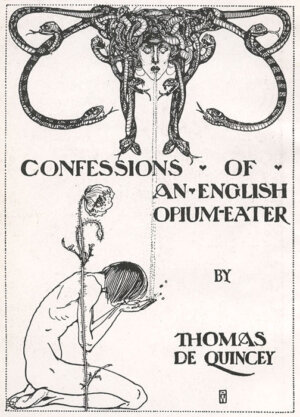
De Quincey concluded that opium-induced visions were produced by the dream faculty in the human mind. He believed that the intake of opium stimulated the dream faculty, which in a waking person produced memories and emotions in symbolic patterns that are seen under the influence of the drug. He called those experiences “involutes.”
According to De Quincey, an involute is a complex feeling made up of memories, impressions, and symbols that involuntarily appear to the mind’s eye. The way he presents the “involutes” makes them sound to me like synesthetic perceptions in which sensory elements such as images and sounds mix to form new perceptual unities. Unfortunately, however, De Quincey was not very specific in his descriptions, so they could be taken as either intellectual constructs or synesthetic perceptions. Fortunately, other drug-experimenting writers were more specific in their descriptions of drug-induced perceptions, perceptions that resemble our current notions of synesthesia.
Murmuring Twilight
The gothic writer Edgar Allan Poe produced an impressive oeuvre that explored the dark sides of human feelings, all the while assisted by the alcoholism and drug addiction that eventually led to his early death. Drugs played an important role in his explorations of the human soul and likely opened new perceptions and experiences to him, including his becoming aware of his synesthetic perceptions. In his short story “A Tale of the Ragged Mountains,” Poe describes, through his character Augustus Bedloe, the effects of morphine on his sensibility:
In the meantime the morphine had its customary effect, that of enduing all the external world with an intensity of interest. In the quivering of a leaf, in the hue of a blade of grass, in the shape of a trefoil, in the humming of a bee, in the gleaming of a dewdrop, in the breathing of the wind, in the faint odors that came from the forest, there came a whole universe of suggestion, a gay and motley train of rhapsodical and immethodical thought.
Poe’s poems are dominated by sensory symbols for the human heart that include his use of darkness, night, cold, and sound (frightening knocks on the door and the squeaking of open windows). The darkness itself evokes synesthetic impressions in him. Poe hears sounds in the shades of black and gray. In his early poem “Al Araaf,” this type of synesthesia steps forward and identifies itself in the second and last lines of the following excerpt:
Sound loves to revel in a summer night;
Witness the murmur of the grey twilight
That stole upon the ear in Eyraco,
Of many a wild star gazer long ago—
That stealeth ever on the ear of him
Who, musing, gazing on the distant dim,
And sees the darkness coming as a cloud—
Is not its form—its voice—most palpable and loud?
The murmuring of the gray twilight and the volume of the darkness is almost tangible. The darker the sky, the louder the sound. Poe’s synesthesia shows similarities with the reports of synesthetes who perceive high-pitched sounds as light and low-pitched sounds as dark. Poe was well aware of his perceptual capacities, as evidenced by a footnote to part II of “Al Araaf ”: “I have often thought I could distinctly hear the sound of darkness as it stole over the horizon.” He even seems to have been aware of the bidirectional nature of his synesthesia, for he wrote in the Democratic Review of November 1844: “The orange ray of the spectrum and the buzz of the gnat affect me with nearly similar sensations. In hearing the gnat, I perceive the color. In perceiving the color, I seem to hear the gnat.”
“The orange ray of the spectrum and the buzz of the gnat affect me with nearly similar sensations,” wrote Edgar Allan Poe in 1844. “In hearing the gnat, I perceive the color. In perceiving the color, I seem to hear the gnat.”
Poe’s “dark” poems and unconventional way of life inspired many poets, including the French poet Charles Baudelaire in Paris some decades later. One of the themes that Baudelaire would elaborate on was that of drugs, sensibility, and synesthesia.
The Hashish Club
In France, Baudelaire’s poem “Correspondences” in the volume “Les Fleurs du Mal (Flowers of Evil),” published in 1857, started a new romantic interest in synesthesia. The poem would become paradigmatic for poets of the Symbolist movement, who tried to discover a higher, spiritual reality by studying sensory correspondences.
“Correspondences”
Nature is a temple in which living pillars
Sometimes give voice to confused words;
Manpasses there through forests of symbols
Which look at him with understanding eyes.
Like prolonged echoes mingling in the distance
In a deep and tenebrous unity,
Vast as the dark of night and as the light of day,
Perfumes, sounds, and colors correspond.
There are perfumes as cool as the flesh of children,
Sweet as oboes, green as meadows
—And others are corrupt, and rich, triumphant,
With power to expand into infinity,
Like amber and incense, musk, benzoin,
That sing the ecstasy of the soul and senses.
Baudelaire’s idea of correspondences is slightly different from the current meaning of synesthesia. He related the perception of sensory correspondences to a state of mind where various sensory impressions (perfumes, colors, sounds) corresponded to one another. The perception of a perfume evoked, in other sensory domains, coolness, sweetness, and greenness. And although these qualities were physically distinct, in his perception they were related in the sense of corresponding or talking with each other. He interpreted these correspondences as a voice from a deeper spiritual level of reality.
Baudelaire was inspired by the philosophy of Emanuel Swedenborg, an 18th-century Swedish scientist and philosopher who believed that sensory correspondences in the natural world mirrored correspondences in the spiritual world. Sensory correspondences would reveal not only the unity of the senses but also the unity of the spiritual world.
But what role did Baudelaire reserve for drugs in this vision? In his book of essays, “Les paradis artificiels (Artificial Paradises),” Baudelaire reported extensively on his investigations into the effects of drugs on perception. According to him, the use of hashish brought a person into a state of mind that had an intensifying impact on sensory experiences. He wrote that in a drugged state, he was able to perceive more sensory details with heightened emotional awareness. He believed that when the senses were more open to new stimuli — a state of mind called “hyperesthesia,” or hypersensibility — new correspondences could be revealed. Hypersensibility revealed a deeper layer of consciousness, one in which the sensory qualities had not yet been separated.
Baudelaire believed that when the senses were more open to new stimuli, new correspondences could be revealed.
The effect of smoking hashish was to uncover them: He wrote that he perceived colors, smells, sounds, and tactile impressions more intensely and as interrelated when he was under the influence of hashish. Perceived correspondences such as colored sounds and musical colors that were placed in the category of temporary hallucinations by his contemporaries were taken as serious perceptions of a deeper layer of consciousness by Baudelaire. Intoxication created by drugs could lead to a mental state of hyperesthesia in which correspondences such as colored sounds and musical colors, appeared:
It is, in fact, at this period of the intoxication that is manifested a new delicacy, a superior sharpness in each of the senses: smell, sight, hearing, touch join equally in this onward march; the eyes behold the Infinite; the ear perceives almost inaudible sounds in the midst of the most tremendous tumult. It is then that the hallucinations begin; external objects take on wholly and successively most strange appearances; they are deformed and transformed. Then—the ambiguities, the misunderstandings, and the transpositions of ideas! Sounds cloak themselves with color; colors blossom into music.
Baudelaire participated in a unique experiment of the Club de Hachichins in Paris in 1845. A painter, poet, and musician named Joseph Ferdinand Boissard de Boisdenier organized monthly gatherings that he named “fantasias” held in his luxury apartment in the Hôtel Pimodan on the île Saint-Louis. The French poet and journalist Théophile Gautier, who was a close friend of Baudelaire’s, saved one such invitation. It reads: “Dear Théophile, next Monday the third of the ninth [1845] hashish will be taken at my place under supervision of Moreau and Roche.”
Jacques-Joseph Moreau and Aubert Roche were physicians who were studying the effects of hashish on patients and had published separate papers on the subject. Moreau was interested in using hashish to cure patients by evoking artificial psychoses while Aubert Roche wanted to use hashish to fight outbreaks of pestilence. The work of Aubert Roche has been — rightly — forgotten, but Moreau’s book contains striking insights into modern pharmacology. In 1845, Moreau argues in his book “Du hachisch et de l’alienation mentale (Hashish and Mental Illness)” that mental diseases could be studied by evoking abnormal states of mind in healthy persons by means of hallucination-inducing drugs such as hashish.

He assumed that hallucinations are a result of stimulation of parts of the brain where imagination and memories are located. Moreau carried out the drug experiments on himself and some of his patients. He also tried to convince his colleagues in the hospital to use hashish, but they refused. He found a more positive response from the bohemian artists in Paris, which is how the gatherings of the Hashish Club began.
The meetings, made famous in articles published by Gautier, were attended by many writers and artists of the day including Baudelaire, Honoré de Balzac, Alexander Dumas, Victor Hugo, Gérard de Nerval, and the painters Eugène Delacroix and Honoré Daumier. In one article, Gautier wrote that as he felt himself go under the influence of hashish, he noticed a strong urge to draw, and within five minutes, he had put down over fifteen sketches on paper. One sketch depicted Moreau in Turkish costume, seated at the piano. Gautier represented the synesthetic colors of the piano notes as curly lines above the instrument. After consuming “dawamesque” — a green pasta of hashish, butter, pistachio nuts, almonds, and honey — Gautier reported his perceptions in time units as in a scientific report.
At the beginning of the experience, Gautier was seized by a general freezing sensation and his body felt as though it had become transparent; he felt his eyelashes grew and curled up as gold threads on little ivory wheels. Around him, color avalanches glittered as in a kaleidoscope. Half an hour later, he got into a second hashish flush with even stranger visions of billions of swarming butterflies whose wings made an intensely loud noise as if they were fans. Gautier finally described how his hyperesthesia produced synesthesia-like perceptions:
Giant crystal flower calices, enormous rose-mallows, golden and silver lilies mounted and opened around me with a crackling like bouquets of fire works. My hearing was developed extraordinarily; I heard the noise of colors. Green, red, blue, yellow sounds reached me in perfectly distinguishable waves.
Following the lead of Dr. Moreau, Gautier considered these drug-induced synesthetic experiences to be experiences of artificial psychosis. He described it as the frightening experience of the alienation of his own body (which is, in fact, very different from how synesthetes describe their experiences nowadays). Contrary to Baudelaire, who considered sensory correspondences to be revelations of spiritual correspondences, Gautier plainly considered it a disruption in the brain.
Pharmacological Studies
As we have seen, the revelation of sensory correspondences by drug use was a subject of 19th-century literature. Some writers took it seriously, but others treated it as fun or a snobbish bijou. From two of the more serious thinkers, however, two opposing views emerged on drug-induced sensory correspondences. The first view, exemplified by Baudelaire, was that correspondences were perceived in a state of hyperesthesia, a hypersensitive state revealing a spiritual unity of the senses. A second view, voiced by Gautier and Dr. Moreau, was that the drug-induced perception of correspondences was a hallucination resembling the hallucinations caused by a mental disorder. Who is right, according to the ideas of contemporary scientists? Can contemporary scientists perhaps offer a third view on the relationship of drug use and synesthetic perception?
During the 1950s and 1960s, there was much experimentation with LSD (lysergic acid diethylamide). Some people reported side effects that sounded like synesthesia when they described their color perceptions. For example, some individuals reported that the LSD added color percepts to nonvisual stimuli such as pure tones. These reports were very similar to the descriptions of hyperesthesia and color hearing reported by Baudelaire and Gautier.
In the 1960s, a pharmacologist named Leo Hollister found that after subjects were given LSD, the addition of pure musical tone to the presentation of a visual flicker altered the color and patterns of the perceived flicker.
In the 1960s, a pharmacologist named Leo Hollister found that after subjects were given LSD, the addition of pure musical tone to the presentation of a visual flicker altered the color and patterns of the perceived flicker. Later in the 1980s, the British neurologist Peter McKellar observed that a subject who had been given mescaline responded to tactile stimulation by a sharp object by saying; “I’ve got concentric circles like around the top of a radio mast. If you touch me, jagged things shoot up; little sort of jagged things, from the center.”
At the same time, the British perception researcher Richard Gregory subjected himself to an injection with ketamine, an anesthetic drug that was often used in plastic surgery, and reported his perceptions to his fellow-researchers. When they caressed the palm of his hand with a hairbrush, Gregory had “a sensation of red wool, woven in squares, like a tapestry,” and when he moved his finger across the bristles he perceived “purple, red images, clear like hypnologic images that were highly saturated like Turkish tiles, orange and green and red.” When a comb was swapped for the brush on his hand, he got “vivid green and red sensations as the comb moves.”
These studies showed that hallucinogenic drugs led to a higher sensibility for physical stimuli, resulting in co-perceptions such as moving colors and forms. They confirm Gautier’s view that drugs can evoke synesthetic perceptions that are hallucinatory. The participants in these studies were not synesthetes. What happens when a synesthete takes hallucinogenic drugs?
After decades of incidental reports of synesthesia as a side effect of drug-induced hallucinations, drug-induced synesthesia started to become studied more systematically in the 1980s. One of the pioneers in this field is a Washington, D.C.-based neurologist, Richard Cytowic. In his popular book, “The Man Who Tasted Shapes,” he describes the case of his patient Michael Watson, for whom a minty taste in his mouth evokes a tactile sensation that is as cool and fresh as the curve of a glass column in his hand. For Watson, flavors have shape. While he tastes the flavors in his mouth, he also feels the shapes all over his body, but mainly as sensations of objects rubbing against his face or in his hands.
Watson tells Cytowic that his synesthetic perceptions vary in intensity during the day. On mornings after some serious drinking, he hardly feels the flavors in his hands or elsewhere on his body. The neurologist learns that Michael drinks many cups of coffee in the morning to sober up and get over the hangover. Could the use of depressants such as alcohol and stimulants such as coffee affect synesthetic perceptions? Watson participates in an experiment by Cytowic with “socially accepted” drugs — alcohol and coffee. After the intake of alcohol, a taste of spearmint increases the sensation of glass columns in his hands, while after coffee, all that is left is the tactile sensation of some small columns further away.
For the synesthete Michael Watson, flavors have shape. While he tastes the flavors in his mouth, he also feels the shapes all over his body, but mainly as sensations of objects rubbing against his face or in his hands.
According to Cytowic, stimulants, like coffee, stimulate the higher cognitive functions in the neocortex (the relatively thin multifold outside layer of the brain), whereas depressants, like alcohol, suppress the responses of the neocortex. Suppression of the rational cortical area lets activity of the emotional limbic system (more centrally located in the brain) emerge and pushes it into the foreground of experience. Cytowic locates the source of synesthetic processes in this limbic system, and thus his predictions that coffee will block and alcohol will enhance synesthetic perceptions were confirmed.
In Cytowic’s studies, unlike in the experiments discussed earlier, synesthesia is not a temporary hallucination. Watson’s synesthesia is permanent and can be slightly modified by taking drugs. Later studies into drug-induced hallucinations of nonsynesthetes confirm Gautier’s reports, but the only study into the modification of synesthetic perception in a synesthete matches Baudelaire’s view. In fact, drug-induced hallucinations and drug-modified synesthesia are two different phenomena.
So the question remains: Is there a direct relationship between synesthesia and drug-induced hallucinations? Though some overlap can be observed in both types of perception, I don’t believe there is.
First, drug-induced hallucinations are temporary, lasting only as long as the drug lasts, whereas synesthetic perceptions are always there throughout one’s life. Second, the perceptions of sensory correspondences change in drug-induced hallucinations, whereas in synesthetic perceptions they are consistent. Third, drug users can distinguish hallucinations they have while under the influence of drugs from their normal states of mind, whereas synesthetes perceive their sensory correspondences while in a normal state of mind. In fact, no observations by others indicate that synesthetes show hallucinatory behavior. Fourth, whereas drug-induced hallucinations are often disruptive to a person’s normal functioning, the “visions” seen by synesthetes don’t interfere with normal life, and in some cases, they help the synesthete perform better, for example, in cases where synesthetes use colors to do mental arithmetic. And lastly, many synesthetes report that they first discover their synesthesia during childhood and not during their first drug experience.
Once dismissed as imagination or delusion, metaphor or drug-induced hallucination, the experience of synesthesia has now been well documented by scans of synesthetes’ brains that show “crosstalk” between areas of the brain that do not normally communicate. What makes it such a fascinating phenomenon is that it raises questions that still perplex scientists. Synesthesia is not an isolated phenomenon in human perception. It is not a fantasy, nor can it be marginalized as an unimportant by-product of a human brain process gone awry. The numerous synesthetes I spoke with when writing my book “The Hidden Sense” regard it as essential in their lives. While reproducing the true experience of synesthesia may be impossible, reorganizing our concept of the sensory channels of the mind is a worthy objective. It can change our view of the human mind, after all, and possibly of the physical world.
Crétien van Campen is a Dutch author, editor and scientific researcher in social science and fine arts. He is the author of several books, including “The Hidden Sense: Synesthesia in Art and Science,” from which this article is adapted.
Recommended Books
